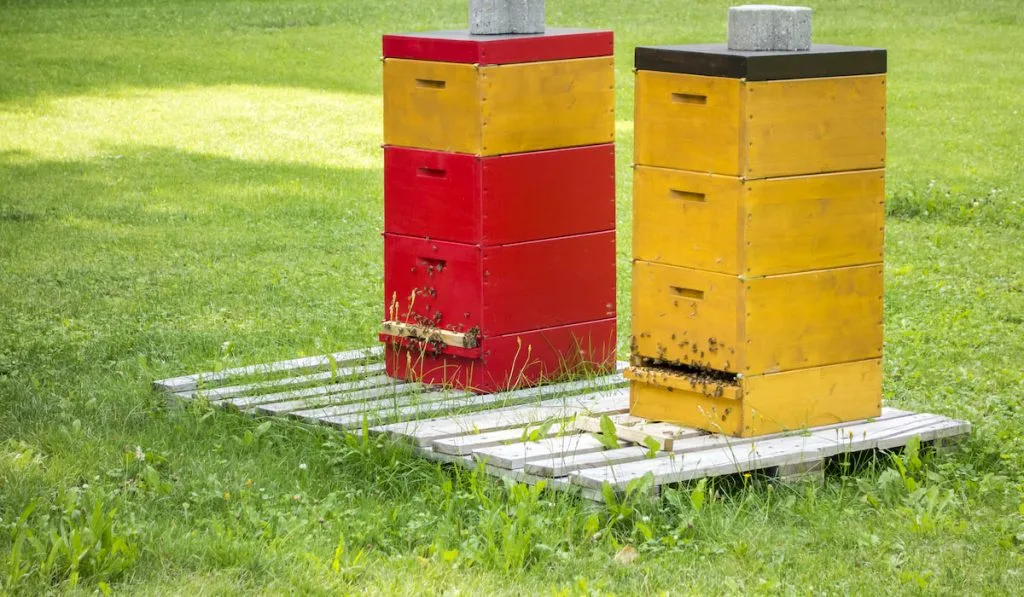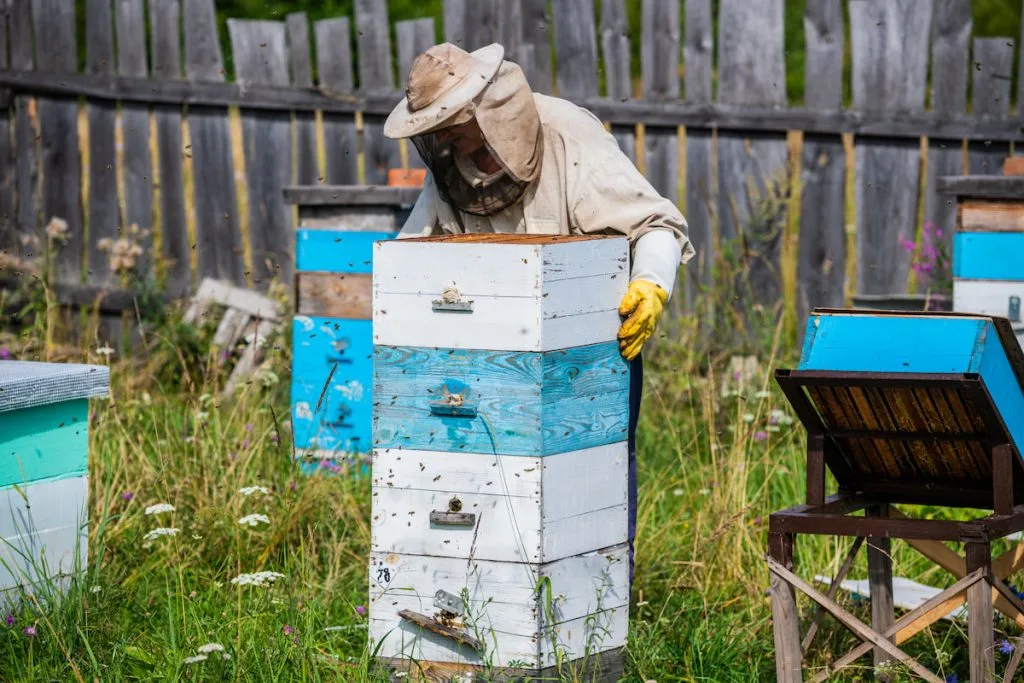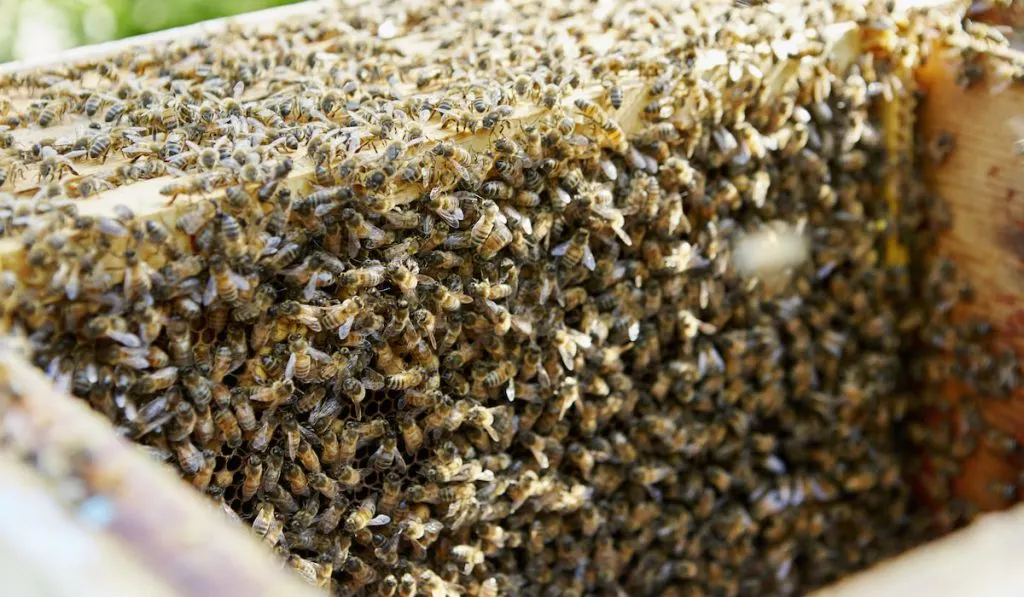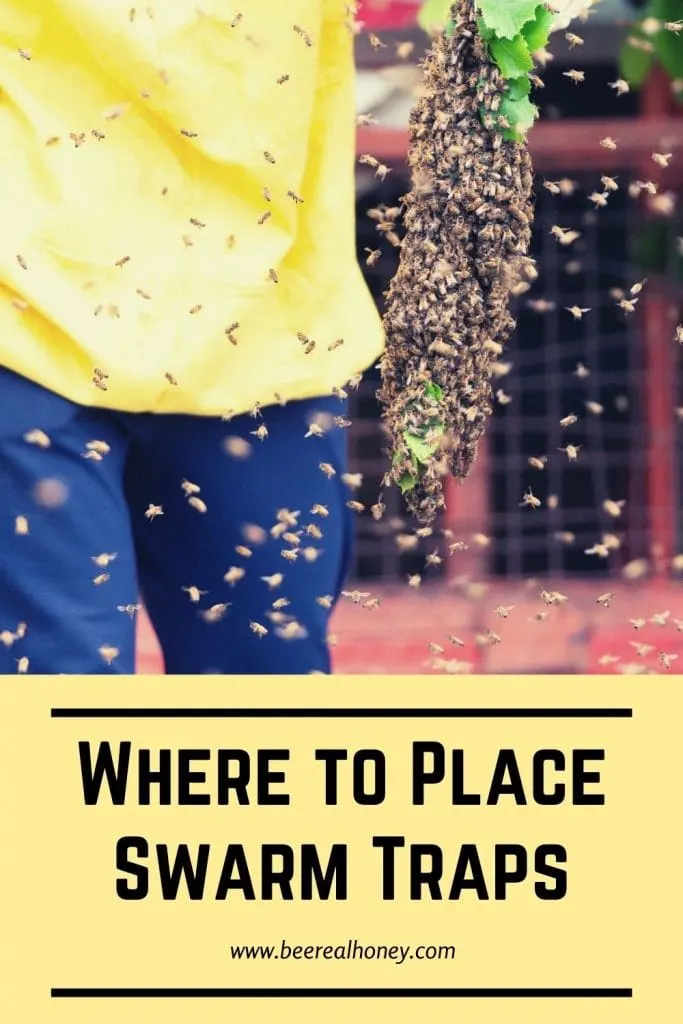*This post may have affiliate links, which means I may receive commissions if you choose to purchase through links I provide (at no extra cost to you). As an Amazon Associate I earn from qualifying purchases. Please read my disclaimer for additional details..
If you have some experience with bee-keeping and want to expand by adding another hive, swarm traps are a good way to begin. But there are tips and tricks you need to know for it to work. Read on to find out these tricks.
A swarm trap or a bait hive is basically a wooden or plywood box used to catch the bees. It typically has a volume of 40 to 70 liters and an entrance of two square inches at the bottom of one wall. The size of the trap depends on swarms, for larger swarms you may need larger traps and small traps for smaller swarms.
After knowing what a swarm trap is, you must have some questions like when to place the swarm trap, at what height should it be placed, and how to bait it. Let’s address all these questions one by one.

Table of Contents
When to Set Out Swarm Traps
The swarm trap should be up a month before the swarm season so it is very important to figure out when the swarm season in your area occurs. According to a rough estimate, when dandelion begins blooming, you should get your traps up.
Swarm weather usually starts after the last winter frost so that is another easy way to figure out your local swarm weather.
Most swarming usually occurs in May and June so your swarm traps should be out by Mid April. Since it’s early in the season, the survival chances of the swarms are more. However, to know for sure if you have a swarm in the trap, you should check the traps every week for drones and pollen going in.
In July, the swarms may still come in the trap but not as frequently though so you should check the trap after every two weeks.
In August, swarms rarely happen but you should keep checking the traps after every three weeks and when the first frost comes you should take down the traps. They can go back up again after the last frost.
Before you place a swarm trap, you should keep the following points in mind about the swarm trap:
- Make sure it is durable and lasts longer than 10 years. The older the swarm trap, the better the success rate.
- It should be lightweight so you can easily climb the trees and other heights while carrying it.
- It must be weatherproof and shouldn’t let any rain in. Bees rarely come near damp traps.
- Be sure that it has frames so you can easily transfer the swarm into permanent hives.

How High Should the Swarm Trap Be
For the traps to work, they should be kept in the right place. Bees usually tend to orient themselves towards high places, therefore, it is important to choose the right height for the traps with sufficient shade such as large tree groves, a shaded location on a roof, or under an eave.
Ideally, the location of the trap should be around 100 yards away from the hives. If you are putting the swarm trap on a tree, make sure the diameter of the tree is 10 inches so the wind doesn’t sway them away.
The swarm trap should be placed 10 feet off of the ground or at least 2.5m high on a pole, tree, or a building and it should face away from winds and towards the north so it can get enough sunlight in the morning. (source)
How to Bait a Swarm Trap
As we have discussed, the trap should have an opening on one wall for the bees to come in but it shouldn’t be big enough for birds to enter. It should also have small holes on the top wall to allow good ventilation.
To bait a swarm trap, you need a lure. Many people use lemongrass, however, there are some other techniques as well, but lemongrass is tried and tested.
To use lemongrass oil, soak a cotton swab in it and dab the entryway with it. Then leave the cotton swab inside the trap.
If you have a part of an old honeycomb, it can also be placed in the trap. Some people have traps big enough to put a drawn down honeycomb frame to attract the bees.
The bees smell it from far away and are immediately drawn towards it. Propolis is also used by some people as bait to attract the bees.
The swarm trap should have a removable lid so you can easily inspect the swarm or remove it if need be.
Once you have set the bait, the waiting period starts. Check the traps often and try to look for bees at the entrance.

What to Do When You Catch a Swarm
When you finally catch a swarm, the first thing you should do is to ensure that the swarm doesn’t leave. The quickest and easiest way to do this is to locate the queen. Once you find her, use a queen clip or something similiar to restrain her.
Let them settle. If you start inspecting them as soon as you catch them or if you move their location immediately, they will try to leave.
You need to make them feel at home, as though it was their idea to choose this trap so be very gentle and avoid shaking them.
One motivation for the swarm to stay in the trap is to give them an empty comb. This will make it more appealing for them or you can add a frame of open brood from some other colony.
If it’s a large swarm, give it enough room by adding more boxes. If the trap is too small the bees might try to leave.

Using a Nuc Box
You could also locate and purchase a nucleus box. Also known as a “nuc box”, these are essentially a mini-hive for the swarm to get started and later, can be transferred to a full-size hive.
When possible, use a trap box that is old and previously used. Bees tend to like places where other bees have already lived. If it’s a new box, bees might not get attracted to it.
Transferring to a New Hive
Once all of the scout bees have come back and the swarm is nicely contained, you can then carefully move it to the new location and install the bees in their new hive.
Now you know all the important things to consider when setting up a swarm trap and what to do after you catch a swarm. Do not forget to wear protective clothing while dealing with bees and enjoy your beekeeping!
